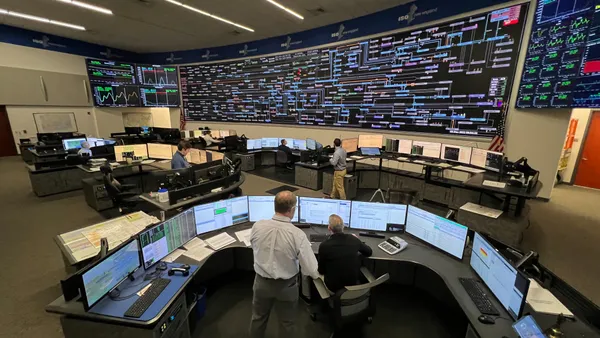Dive Brief:
- NRG and Renew Home are partnering to deploy hundreds of thousands of smart thermostats across Texas to support a residential virtual power plant with nearly 1 GW of capacity by 2035, the companies said Thursday.
- The Google Cloud-supported partnership will begin installing Vivint and Nest smart thermostats at participating households in spring 2025 and could eventually expand its VPP to leverage home batteries, electric vehicles and other distributed energy resources, the companies said.
- NRG plans to use Google Cloud data, analytics and AI to improve weather forecasting, variable renewable generation modeling and predictive pricing models to improve the performance of the Renew Home VPP and “other strategic initiatives,” the companies said.
Dive Insight:
The NRG-Renew Home VPP will have capacity equivalent to 12 gas-fired peaker plants or nearly 300 wind turbines, the companies said.
“As rapid population growth and weather events create new challenges for meeting demand in [the Electric Reliability Council of Texas service area], VPPs can deliver a reliable, flexible and dispatchable energy resource,” Renew Home CEO Ben Brown said in a statement.
Utilities, regulators and policymakers view expanded virtual power plant capacity as an expeditious, cost-effective solution for load growth and grid congestion.
Increasing VPP capacity to 80 GW to 160 GW by 2030 could save about $10 billion annually in grid costs, the U.S. Department of Energy said last September. Separate studies by Brattle Group found VPPs could enable up to $35 billion in avoided nationwide utility capacity investment over 10 years and up to $755 million in annual avoided power system costs by 2035 in California alone.
As the single largest contributor to both summer and winter demand peaks, the United States’ approximately 82 million residential HVAC systems could play a pivotal role in rapidly expanding the country’s VPP capacity, Renew Home said in an August 2024 position paper. Smart thermostats can shift the typical U.S. home’s load by 0.88 kW and unlock nearly 70 GW in nationwide VPP capacity, the paper said.
Scaling a 70-GW VPP network would require about $15 billion in capital costs, compared with $70 billion to build out an equivalent network of gas-fired peaker plants, according to Renew Home. The VPP option could reduce customer electricity bills by more than $10 billion through a combination of energy savings and VPP payments, Google Nest said in a separate white paper.
A growing population and expanding industrial base have contributed to dramatically higher load growth forecasts in Texas. Earlier this year, ERCOT revised its 2030 load growth forecast up to 152 GW, an increase of 40 GW from the previous year’s forecast.
The grid operator said it is working on a range of near- and longer-term solutions, including a faster “connect and manage” approach to generator interconnection, a joint study with the Public Utility Commission of Texas and Texas A&M University of energy efficiency and demand response opportunities, a focus on regional “generation hubs” in transmission planning and a potential buildout of high-voltage 765-kV transmission lines.
But experts say aggregating existing or soon-to-be-deployed distributed energy resources into VPPs takes less time than building new transmission infrastructure or generation assets. New VPPs can be planned and deployed in as little as six to 12 months, RMI said in July.













